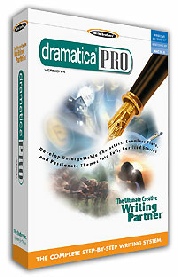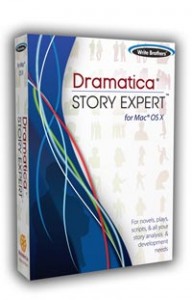Back in the very earliest days of Dramatica development, we decided to document what we had learned so far. So, we wrote the following short introduction to our work.
Before Robert Mackee camed out with his noted book, we had decided to call our work:
STORY
Contagonist. A word you've probably never heard. But it was the starting point to our discovery of a new system of story analysis and construction nearly ten years ago.
The system itself is not based on searching stories for similarities, but rather, looks at why stories exist, and therefore what they must do to fulfill their purpose.
Stories exist as a replica of the way a human mind solves a problem. We can apply REASON or decide based on our EMOTIONS. We can have FAITH in our ability to solve the problem or SKEPTICISM that it can be solved at all.
Only these four approaches can be taken.
In the human mind, we flit from one to another, considering them all simultaneously. In Story we use individual characters to illustrate these approaches.
In simple stories, one character represents each approach. Examples: 1. In Star Wars, Luke is the FAITHFUL, Han Solo the SKEPTICAL, while Chewbaca is EMOTION, and Leia, REASON. The other characters will be explained later. 2. In Wizard of Oz, Dorothy is FAITHFUL, the Cowardly Lion, SKEPTICAL, Scarecrow, REASON, and Tin Man, EMOTION.
These approaches can be combined within one charachter, as in Jaws, where Quint is EMOTION, Hooper is REASON, and Brody combines both FAITH and SKEPTICISM. This leads to his inner conflict between his sense of duty and his fear of water.
This establishes a set of a maximum of four characters we call the PROTAGONISTIC GROUP. It is our contention that there is no single protagonist unless he combines all four approaches. But for clarity of conflict, most stories separate them.
The PROTAGONISTIC GROUP is identified by the sharing of a common goal, whether it be to kill the shark, evade the Empire, or see the Wizard. They simply try to solve the problem in the manner of the approach they represent.
Imagine a circle with FAITH at the top, SKEPTICISM at the bottom, REASON on the left, and EMOTION on the right. The greatest conflict is between characters on opposite sides, or if a character embodies two approaches, the greatest internal conflict is generated the same way.
But there are other characters. The Mind in solving a problem is swayed by CONSCIENCE and TEMPTATION. These are represented by the GUARDIAN and CONTAGONIST. Obi Wan Kenobi and Darth Vader. Glinda, and the Wicked Witch of the West.
It was the discovery of the Contagonist that set us down the decade-long path toward this final and complete version of "Story".
Characters like the Mayor in Jaws are not the antagonist - the shark is. But they still hinder the PROTAGONISTIC GROUP in its goal. The CONTAGONIST function as a hinderer, while the GUARDIAN serves to protect.
The remaining simple character is the ANTAGONIST who is defined as the character in DIRECT opposition to the sucess of the PROTAGONISTIC GROUP in achieving its goal.
These seven characters round out the list of the maximum necessary to tell a story.
Thursday, April 30, 2009
Subscribe to:
Post Comments (Atom)







No comments:
Post a Comment